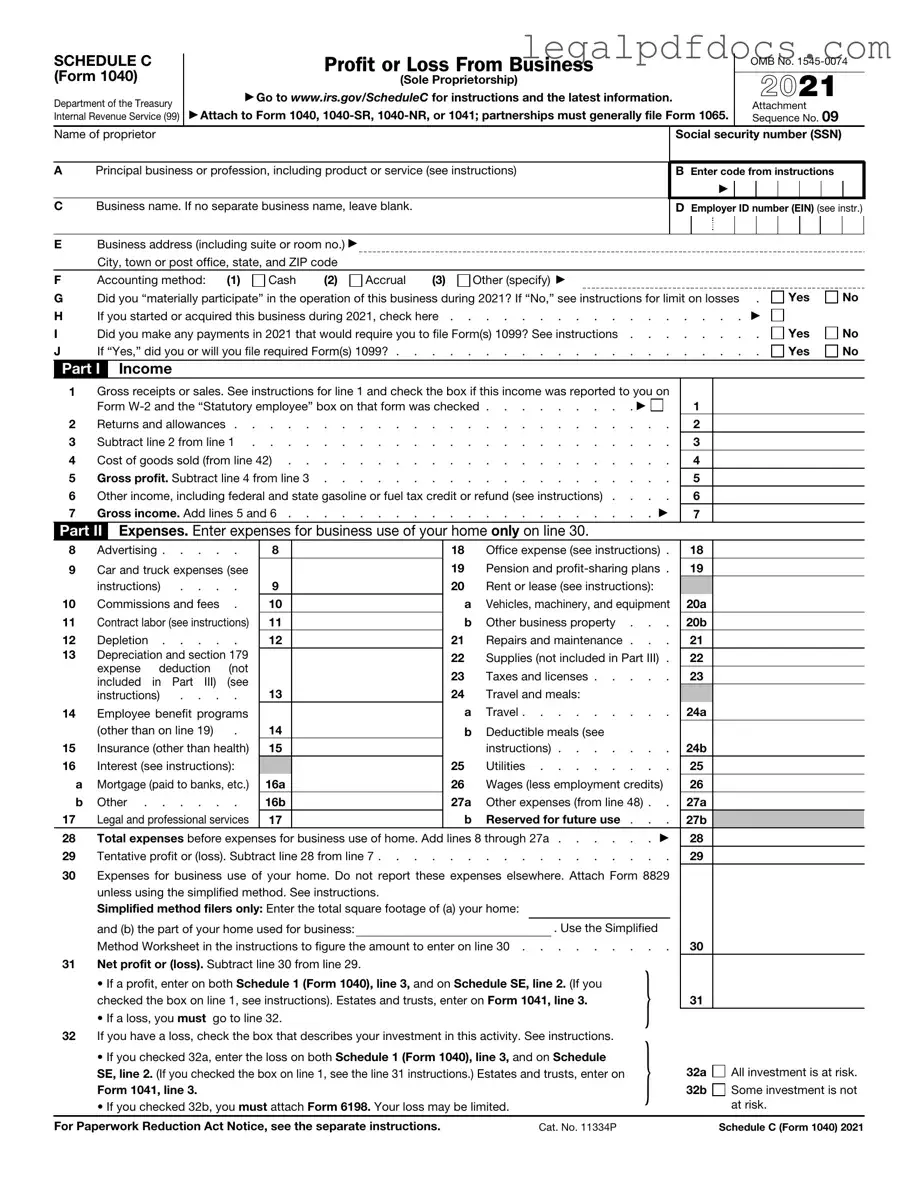Fill Out a Valid IRS Schedule C 1040 Template
The IRS Schedule C (Form 1040) is a crucial document for individuals who are self-employed or operate a sole proprietorship. This form allows taxpayers to report income and expenses related to their business activities, ultimately determining their net profit or loss. Understanding how to accurately fill out Schedule C can significantly impact your tax obligations, so be sure to take the time to complete it correctly.
Ready to tackle your Schedule C? Click the button below to get started!
Open IRS Schedule C 1040 Editor Here
